Nestled amidst the picturesque shores of the Great Salt Lake, Antelope Island State Park beckons travelers with its pristine landscapes, abundant wildlife, and rich historical heritage, inviting them to immerse themselves in a realm of natural wonders and cultural significance.
This captivating sanctuary boasts a diverse array of geological formations, from towering cliffs to serene beaches, creating a breathtaking backdrop for outdoor adventures and wildlife encounters.
Geographic Location and Accessibility
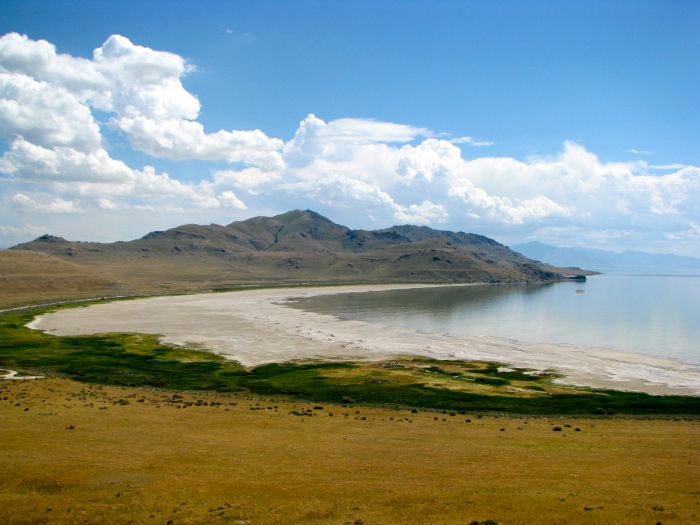
Antelope Island State Park is a unique and beautiful destination located in the northern part of Utah, within the Great Salt Lake. It is the largest island in the lake, spanning over 42,000 acres of land. The park is easily accessible by car, just a short drive from the city of Salt Lake City. Visitors can take Interstate 15 north to exit 332, then follow the signs to the park entrance.
For those without a car, public transportation options are also available. The Utah Transit Authority (UTA) provides bus service to Antelope Island from Salt Lake City. The FrontRunner train line also has a stop at the park, making it convenient for visitors coming from the north or south.
Antelope Island State Park, a scenic retreat, offers breathtaking views and abundant wildlife. While planning your visit, consider exploring aquarium boston , a renowned marine sanctuary showcasing diverse aquatic life. Upon your return to Antelope Island, immerse yourself in its serene landscapes, teeming with bison, pronghorns, and countless other species.
Driving Directions
- From Salt Lake City, take Interstate 15 north to exit 332.
- Follow the signs to Antelope Island State Park.
- The drive from Salt Lake City to the park entrance takes approximately 45 minutes.
Public Transportation
- Take the UTA bus route 670 from Salt Lake City to Antelope Island State Park.
- The bus ride takes approximately 1 hour and 15 minutes.
- The FrontRunner train line has a stop at Antelope Island State Park.
- The train ride from Salt Lake City to the park takes approximately 1 hour.
Natural Features and Wildlife
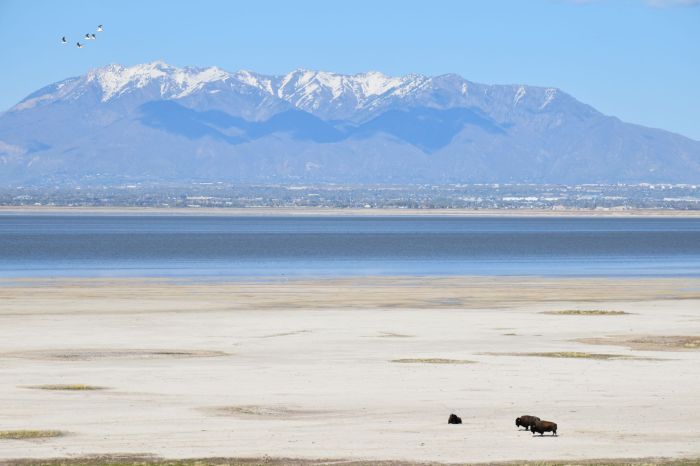
Antelope Island State Park boasts a diverse array of geological formations and landscapes, from towering sandstone cliffs to rolling hills and tranquil bays. The island’s unique geology, shaped by ancient volcanic activity and glacial erosion, has created a stunning tapestry of natural wonders.
Antelope Island State Park, Utah’s largest state park, is renowned for its scenic beauty and abundant wildlife. Its rolling hills, expansive lake views, and herds of roaming bison create a captivating landscape. While Antelope Island offers a unique wilderness experience, those seeking a coastal adventure can explore the vibrant city of Alicante in Spain.
With its stunning beaches, towering cliffs, and vibrant nightlife, Alicante provides a contrasting yet equally captivating experience. However, the allure of Antelope Island’s tranquil beauty and diverse wildlife ultimately draws visitors back to its serene embrace.
The park is home to a remarkable variety of wildlife, including the largest free-roaming herd of American bison in the United States. Pronghorn antelope, with their exceptional speed and graceful movements, roam the island’s grasslands. Migratory birds, such as pelicans, cormorants, and egrets, find refuge in the park’s wetlands and along the Great Salt Lake shoreline.
Geological Formations
- Bonneville Shoreline: Evidence of the ancient Lake Bonneville, which once covered much of the Great Basin, can be seen in the form of a distinct shoreline terrace encircling the island.
- Sandstone Cliffs: Antelope Island is renowned for its towering sandstone cliffs, formed from ancient sand dunes that were uplifted and eroded over millions of years.
- Lava Flows: The island’s volcanic past is evident in the presence of lava flows, which create rugged and dramatic landscapes.
Wildlife
Antelope Island State Park is a sanctuary for a wide range of wildlife species, including:
- American Bison: The island is home to the largest free-roaming herd of American bison in the United States, with an estimated population of over 700.
- Pronghorn Antelope: These swift and agile animals can be seen grazing in the park’s grasslands.
- Migratory Birds: The park’s wetlands and shoreline provide a haven for migratory birds, including pelicans, cormorants, egrets, and herons.
Recreational Activities
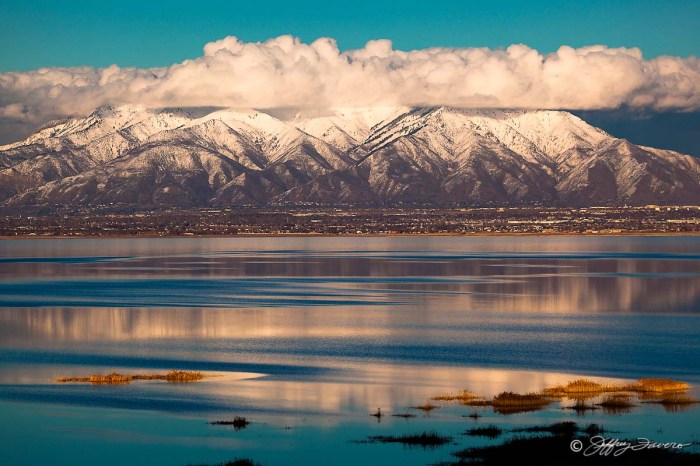
Antelope Island State Park offers a wide range of recreational activities for visitors of all ages and abilities. From hiking and biking to kayaking and wildlife viewing, there’s something for everyone to enjoy.
Here’s a comprehensive list of recreational activities available in the park:
Hiking
- Antelope Island Trail: A 12-mile loop trail that offers stunning views of the Great Salt Lake and the surrounding mountains.
- Bridle Veil Falls Trail: A 1.5-mile trail that leads to a beautiful waterfall.
- Buffalo Point Trail: A 2-mile trail that offers panoramic views of the lake and the island’s bison herd.
Biking
- Antelope Island Trail: The same 12-mile loop trail that is popular for hiking is also open to mountain biking.
- White Rock Bay Trail: A 5-mile trail that follows the shoreline of the lake.
li>Causeway Trail: A 2-mile trail that connects the island to the mainland.
Kayaking
- Antelope Island State Park Marina: The marina offers kayak rentals and guided tours of the lake.
- White Rock Bay: A popular spot for kayaking due to its calm waters and scenic views.
- Causeway Bay: Another good spot for kayaking, with easy access to the lake from the causeway.
Wildlife Viewing
- Bison Safari: Visitors can take a guided tour of the island’s bison herd.
- Bird Watching: The park is home to a variety of bird species, including pelicans, egrets, and herons.
- Wildlife Viewing from the Causeway: Visitors can often see bison, pronghorn antelope, and other wildlife from the causeway that connects the island to the mainland.
Additional Activities, Antelope island state park
- Camping: The park has several campgrounds available for tent and RV camping.
- Picnicking: There are several picnic areas located throughout the park.
- Swimming: Visitors can swim in the Great Salt Lake at designated areas.
- Boating: The park has a marina where visitors can launch their own boats.
Historical and Cultural Significance
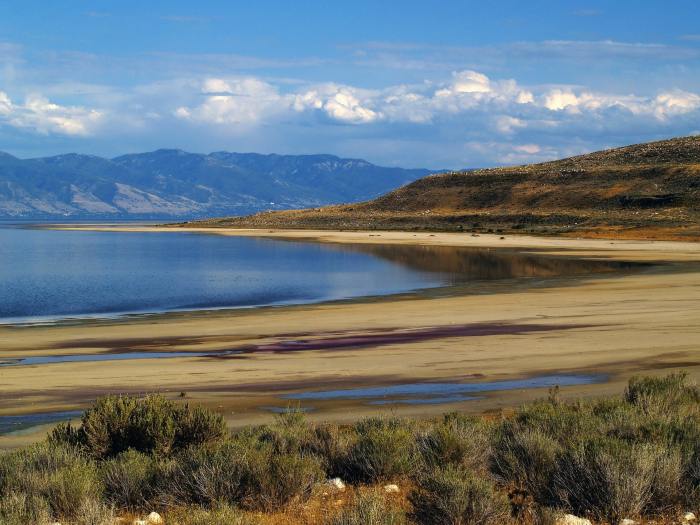
Antelope Island holds significant historical and cultural value, serving as a haven for Native American tribes and witnessing the arrival of early settlers. Its rich history has shaped the island’s present-day identity.
Native American History
For centuries, the island was home to Native American tribes, including the Shoshone and Goshute. They utilized the island’s abundant resources for hunting, fishing, and gathering, leaving behind remnants of their presence in the form of petroglyphs and artifacts.
Early Settlement
In the mid-19th century, Mormon settlers arrived on Antelope Island, seeking grazing lands for their livestock. They established farms and ranches, transforming the island’s landscape and introducing a new era of human habitation.
Key Events and Milestones
* 1843: Jim Bridger, a renowned mountain man, discovers Antelope Island.
* 1847: Mormon settlers establish a permanent settlement on the island.
* 1859: The island is purchased by Brigham Young, the leader of the Mormon Church.
* 1969: Antelope Island is designated as a state park, preserving its historical and natural heritage.
Educational Programs and Facilities
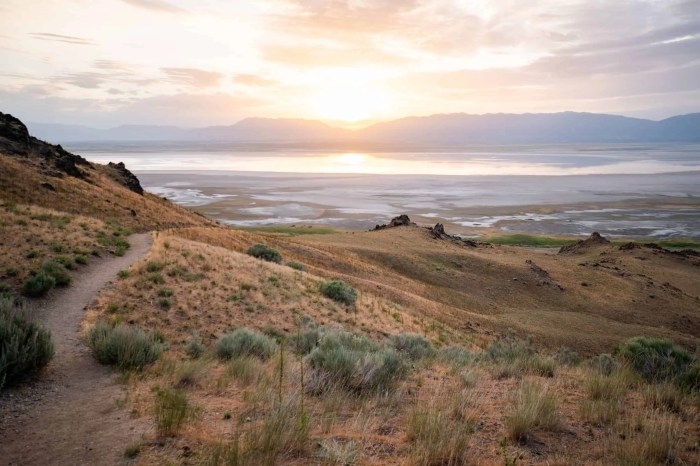
Antelope Island State Park offers a variety of educational programs and facilities that enhance the visitor experience. These programs are designed to educate visitors about the park’s natural and cultural history, as well as its wildlife and conservation efforts.
Interpretive exhibits are located throughout the park, providing information on the area’s geology, ecology, and history. Guided tours are also available, led by park rangers who share their knowledge and insights about the park’s unique features.
Facilities
The park offers a range of facilities to accommodate visitors, including:
- Visitor Centers: The Fielding Garr Ranch Visitor Center and the Bridger Bay Visitor Center provide information about the park, its history, and its wildlife. They also offer educational programs and exhibits.
- Campgrounds: The park has several campgrounds with a variety of campsites to choose from, including RV hookups, tent sites, and group campsites.
- Picnic Areas: Picnic areas are located throughout the park, offering scenic views and tables for picnicking. Some picnic areas also have grills available for use.
Conservation and Management
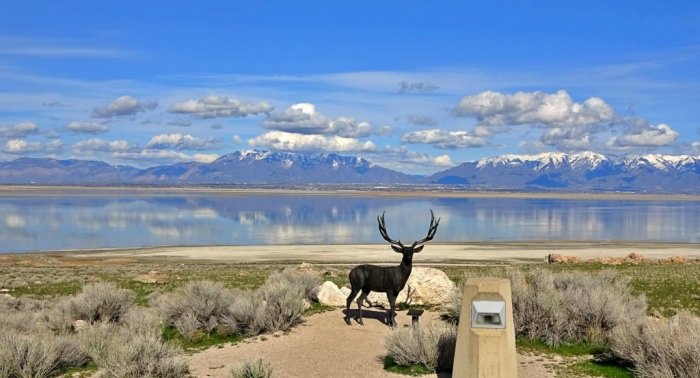
Antelope Island State Park is committed to protecting its natural resources and wildlife for future generations. The park’s conservation efforts include habitat restoration, wildlife management, and invasive species control.
To ensure the park’s sustainability and ecological balance, a comprehensive management plan is in place. This plan Artikels strategies for managing visitor use, protecting natural resources, and maintaining the park’s unique ecosystem.
Wildlife Management
The park’s wildlife management program focuses on maintaining healthy populations of native species. This includes monitoring populations, conducting research, and implementing conservation measures.
- Antelope Island is home to one of the largest free-roaming bison herds in the United States. The park conducts regular population surveys and implements management strategies to ensure the herd’s health and genetic diversity.
- The park also supports a variety of other wildlife species, including mule deer, pronghorn antelope, and coyotes. Management efforts include habitat restoration, predator control, and disease monitoring.
Habitat Restoration
The park’s habitat restoration program aims to restore and enhance native plant communities. This includes removing invasive species, planting native trees and shrubs, and restoring wetlands.
- Invasive species, such as cheatgrass and Russian thistle, can degrade native habitats and outcompete native plants for resources. The park’s restoration efforts focus on removing these invasive species and re-establishing native plant communities.
- Native trees and shrubs provide food and shelter for wildlife, and they also help to stabilize soils and reduce erosion. The park’s planting program focuses on restoring these important plant species.
Visitor Management
The park’s visitor management program aims to balance public access with the protection of natural resources. This includes managing visitor use, providing educational programs, and enforcing park regulations.
- The park’s trails and campgrounds are designed to minimize impacts on wildlife and sensitive habitats. Visitors are encouraged to stay on designated trails and camp in designated areas.
- The park’s educational programs help visitors to understand the importance of conservation and the role they can play in protecting the park’s resources.
- Park regulations help to protect the park’s natural resources and wildlife. Visitors are required to follow these regulations, which include restrictions on camping, fishing, and hunting.
Visitor Information and Amenities
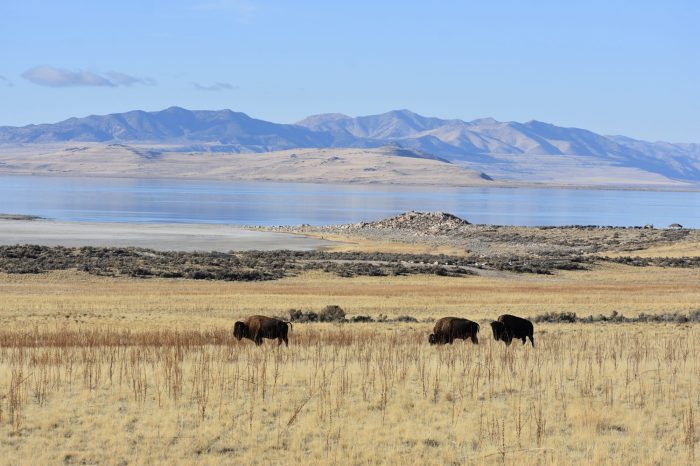
Antelope Island State Park offers a range of amenities to enhance the visitor experience.
Park hours vary depending on the season. During summer months, the park is open from 6:00 AM to 10:00 PM, while in winter months, hours are from 8:00 AM to 5:00 PM. Vehicle entrance fees are required for all visitors, with annual passes available for frequent visitors.
Antelope Island State Park offers a serene escape with its picturesque landscapes and abundant wildlife. If you seek a change of scenery, consider exploring the vibrant shores of Airlie Beach , where you can bask in the sun, indulge in water activities, and immerse yourself in the lively atmosphere.
Upon your return to Antelope Island State Park, you’ll find solace in its tranquil trails and stunning views of the Great Salt Lake.
Park Fees
Entrance fees for Antelope Island State Park are as follows:
- Daily Vehicle Pass: $15
- Annual Vehicle Pass: $75
Amenities
The park provides a variety of amenities for visitor convenience:
| Amenity | Availability |
|---|---|
| Restrooms | Throughout the park |
| Concessions | Seasonal, located at Bridle Veil Falls |
| Medical Services | First aid available at the visitor center |
| Camping | Developed and primitive campsites available |
| Picnic Areas | Designated areas with tables and grills |
| Hiking Trails | Over 50 miles of trails for all skill levels |
| Biking Trails | Designated trails for mountain biking |
| Horseback Riding | Guided tours and rentals available |
| Wildlife Viewing | Abundant opportunities to observe bison, pronghorn, and other wildlife |
Outcome Summary: Antelope Island State Park

Antelope Island State Park stands as a testament to the enduring beauty of nature and the enduring legacy of human history. Whether you seek solace in its tranquil surroundings, marvel at its diverse wildlife, or delve into its fascinating past, this enchanting destination offers an unforgettable experience that will leave a lasting impression.
Common Queries
What are the best hiking trails in Antelope Island State Park?
The Frary Peak Trail offers stunning panoramic views, while the Bridle Trail provides a more leisurely stroll along the lakeshore.
Can I camp overnight in the park?
Yes, there are several designated campgrounds available for both tent and RV camping.
Are pets allowed in the park?
Pets are not permitted on the island due to the presence of wildlife.